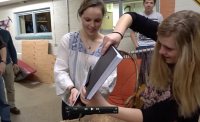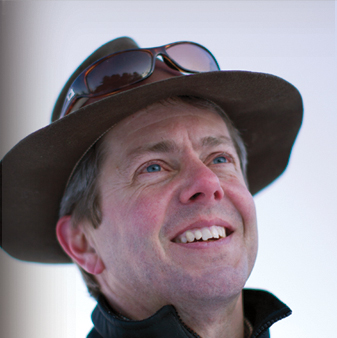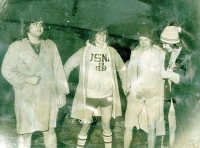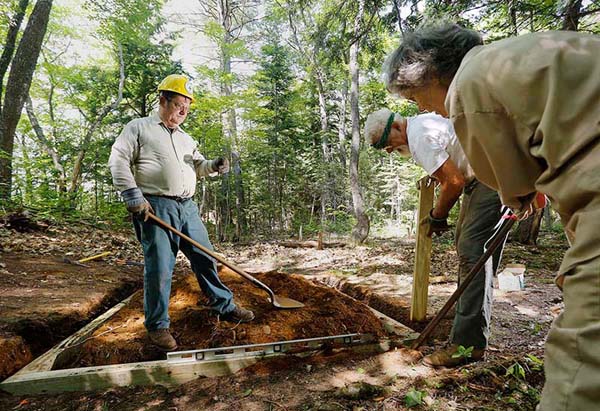
Editor’s Note: Winter 2013
In the Bates Outing Club meeting room, there was some uncertainty about the provenance of their decades-old gear — the Windsor benches, road signs, the kayak suspended from the ceiling.
This was in January, right before the BOC’s big move from Alumni Gym, its home since 1929, into renovated space in Chase Hall.
Take the vintage photo of women in formalwear. It depicts not Southern debutantes, as some BOC members thought, but the queen of a Bates Winter Carnival.
This lapse is understandable. BOC leaders turn over every semester (and the student body every four years), slowly rinsing away historical knowledge.
Plus, as Bates anthropologist Elizabeth Eames points out, our society relies on the written word to preserve history. The BOC’s own publications and meeting minutes notwithstanding, an oral society would tend to pass down the meeting room’s history through various “spoken, visual or kinetic” rituals, says Eames.
Long ago, Bates history was imparted through such “age-grade” rituals, “difficult yet meaningful” initiations where elders shared Bates knowledge with newcomers.
Back then, new students learned history during the hazing rite called “Freshman Rules.” The venerable Harry Rowe delivered a signature lecture on Bates traditions, a practice kept up on a smaller scale by recently retired administrator Bill Hiss ’66.
Actually, it’s not essential for a group to know the history of something it reveres, says Eames’ colleague Loring Danforth.
For example, the origin of the club’s beloved “Ma Bell” award, a mangled remnant of a bicycle that goes to the BOCer who survives a risky experience, has several versions. The correct one is that Laird Allen ’83, biking in Auburn in 1981, rear-ended a telephone truck while wearing a Bell helmet, hence “Ma Bell.”
The BOC reveres the Ma Bell Award the way someone might value hearing Mass in Latin, “without understanding the words,” Danforth said.
Meeting-room items aside, kudos to the BOC for generally being keenly aware of its place in Bates history, thanks to adviser and elder Judy Marden ’66 and BOC alumni who remind the club of its traditions and responsibilities in Maine.
Beyond the BOC, students learn Bates history from professors who use the robust resources of the Muskie Archives and Special Collections Library in their coursework. And the athletics programs turn to the Archives to reify Bobcat history.
How Bates’ past will influence our future is a hot topic this cold winter.
First, alumni engagement (volunteerism and fundraising) depends on students becoming alumni who understand Bates history.
Second, President Spencer invoked our history of “standing firmly on principle and encountering the world with energy and confidence” during her inaugural address. This Bates “mindset” readies us to “engage robustly and effectively with the forces that are reshaping our world.”
In that spirit, this issue offers stories about both the past — looking at Benjamin Mays ’20 and about the Gomes Chapel — and current concerns, including our ecopsychology-inspired cover essay about beauty, mindfulness and nature; and our take on Spencer’s inaugural message.
H. Jay Burns, Editor
magazine@bates.edu





